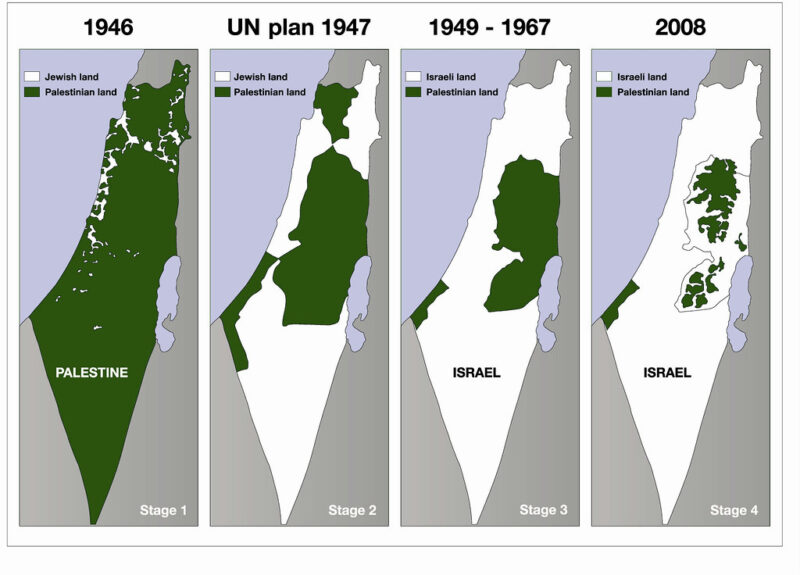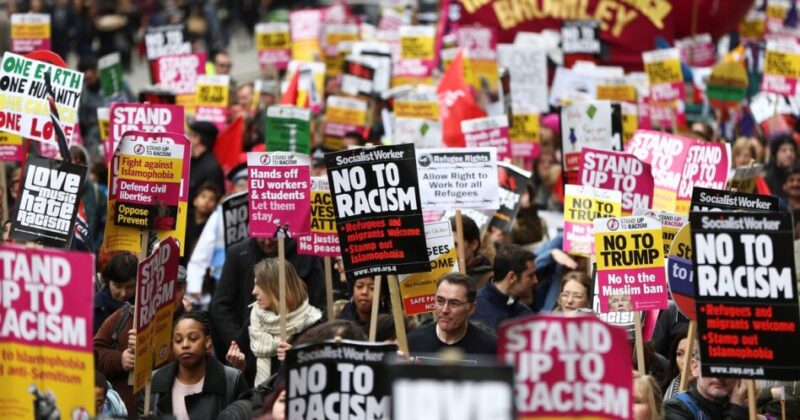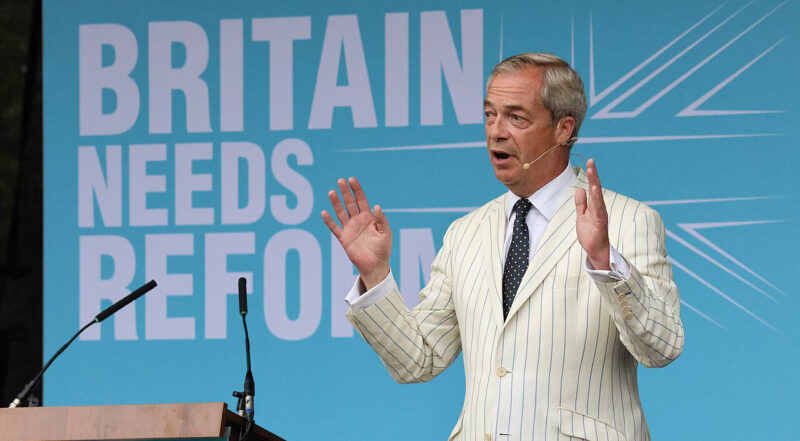A critical review of the anti-cuts movement
As we approach the second anniversary of the Coalition government coming to office, Workers Power conference looked back at the movement against austerity – not from the viewpoint of passively recording history, but in order to build on our strengths, overcome our weaknesses and chart a path forward.
 Since coming to power in 2010, the Tory/Lib Dem Coalition government has launched systematic attacks on the public sector and welfare state, aiming to transfer wealth from poor to rich and kick-start economic growth by opening up previously protected areas of the economy through privatisation. They began with more vulnerable sectors i.e. those without high levels of organisation or unionisation, or those they thought unlikely to resist.
Since coming to power in 2010, the Tory/Lib Dem Coalition government has launched systematic attacks on the public sector and welfare state, aiming to transfer wealth from poor to rich and kick-start economic growth by opening up previously protected areas of the economy through privatisation. They began with more vulnerable sectors i.e. those without high levels of organisation or unionisation, or those they thought unlikely to resist.
Services for the disabled and the elderly, as well as funding for charities and other not-for-profit organisations, were the first to come under the axe. Local council funding was slashed, leading to a wider impact on local services such as libraries and leisure centres. Most councils, however, held back from attacking large sections of its public sector workers at the beginning.
Students were next in the firing line, as the government took deliberate steps towards privatising higher education. The government expected that the NUS, certainly post-Governance Review, would mount no serious resistance. They were right to expect this, but failed to anticipate the potential for an alternative leadership, developed through the strategy proposed by left groups, intersecting with the spontaneous anger and militancy of hundreds of thousands of youth.
Despite the speed at which this movement developed, the political awareness of the leading activists did not develop to the point where it continued to fight the attacks after the parliamentary vote. The teaching unions limited their support mainly to words, as well as some practical assistance in the occupations. Without combining the militancy of the students with the industrial power of the workers meant that the fightback was limited and quickly waned.
However, despite its failure, this movement politicised another generation of youth and educated them in struggle. It was an excellent example of how a struggle can erupt against a government ‘reform’ and become a real mass movement through the student assemblies and forming a united front with student leaders and other left forces (National Campaign Against Fees and Cuts, the London Assembly). Such bold initiatives are a vital part of what even small socialist groups can do – “a sharp axe hews heavy beams”. However, there are always objective limits, particularly when applied to trade unions where the bureaucracy is a very heavy beam to chop through. Moreover, the single-issue nature of the campaign, initially a strength, became a limitation once parliament passed the reforms.
Union response
As the attacks on the public sector escalated, outlined in the Spending Review announced on October 2010, pressure mounted on the TUC to hold a demonstration against the cuts. They purposely called a march for six months later, on 26 March 2011, but this call was met with an overwhelming response as trade unions, as well as anticuts organisations, mobilising half a million people onto the streets. This was followed with national strike action three months later on 30 June (J30) and another five months later this action was escalated into 30 November (N30). Between the two strikes, the teaching and civil service unions tried to form a wider coalition around the defence of public sector pensions, focusing on persuading other unions to vote at the TUC for a coordinated strike.
The debate at this congress focused on whether to pick pensions or the NHS as the issue. The decision of the TUC to launch strikes limited to the issue of pensions at a time when the whole working class faces unprecedented austerity meant that only public sector workers were mobilised and lowered the horizons of those taking part.
The pensions issue was picked over the NHS because the trade union movement could launch legal and what they consider to be ‘well-supported’ strikes. A TUC strike over the NHS would have entailed illegal and more overtly political strikes, and involved those outside the trade union movement. In addition, the TUC made a conscious decision not to strike over three pressing issues – pensions, pay and jobs – at the same time and, importantly, not to add privatisation to that list.
N30 was possibly the largest strike since 1926 and motivated huge numbers of public sector workers to fight back in defence of their pension, but after N30 the right wing union leaderships pulled out of the fight and signed up to the sell-out. This gave the “refusenik” union leaders the opportunity to duck the fight, so that only London NUT and UCU members were out on strike on 28 March (see page 6 for more analysis on the pensions dispute).
Alongside the students and workers waging battles against specific cuts, #Occupy has raised the idea of general resistance to cuts and capitalism, the summer riots exploded in reaction to the general impoverishment being imposed on the working class and unemployed as well as the criminalisation – and brutal repression – of young people.
The revolutions in the Middle East also brought ideas about democracy and civil rights, as well as using mass resistance to fight for these goals. The general strikes across Europe got less positive coverage in Britain and certainly with regard to Greece were framed as an argument about what realistic options there were for various countries and how their actions would impact on “our” economy. However, there was still broad support for these movements and they were certainly inspiring.
#Occupy seems to have been demobilised by cold weather and evictions, but the Egyptian struggle is far from over and we could see a further uprising. If this does happen then we can be sure that the media coverage of it won’t be quite so positive as before, but we can expect many of those who took inspiration from the first stage of that revolution to continue to support it and perhaps learn from the Egyptian working class and youth.
Fragmentation of the movement
Despite the enormous potential demonstrated by the student and workers’ struggles, and the politicisation brought about by the Egyptian revolution and the subsequent #Occupy movement, the anticuts movement in Britain remains fragmented.
All the anticuts issues – education fees, disability and other benefits, funding for local services and charities for youth, women and minorities, the NHS, etc. – remain either sectionally divided or at best are only locally coordinated. Local anticuts committees remain at best gatherings of activists rather than the delegate-based councils of action we need. They are largely limited to small local demos, symbolic occupations or supporting local trade unionists’ or services users’ struggles. Important as this is, it does not constitute a wave of mass resistance.
The Socialist Party’s (SP) initiative, the National Shop Stewards Network (NSSN), existed before the economic crisis and was a vehicle for creating a broad left alliance across the unions and gaining influence in those unions where they don’t yet have members. Early on this network did involve activists beyond the SP until they tried to launch a separate anticuts campaign; those outside the SP left in protest, arguing for unity with existing anticuts campaigns.
The Socialist Workers Party’s (SWP) first campaign was Right to Work (RtW), which was established around the problem of rising unemployment at the start of the crisis but has since taken on a broader remit and focuses on organising protests at Lib Dem and Conservative party conferences with varied success. It recently received media attention around the anti-workfare protests.
Counterfire established Coalition of Resistance (CoR) as an attempt to replicate the Stop the War Coalition but against cuts. It had a very promising beginning with a conference of more than 1,000 people. However, the non-aggression pact it signed with RtW and NSSN meant that it didn’t create the united anticuts movement that activists were looking for and its second conference was less than half the size. CoR also orientated to the right wing of the anticuts movement and refused to raise the general strike slogan, arguing that it was impossible at this time and also a trade union issue that they should not interfere with.
The SWP then launched Unite the Resistance (UtR), which is more akin to the NSSN than to RTW and CoR. It was launched around the pensions strikes and focused on the industrial side of the fight against cuts and organising rank and file trade unionists. UtR had a clear “name the day” message for action and was far more democratic than any of the other campaigns launched by the SWP.
It adopted a decent set of demands around the pensions strike but has been stumped both by the retreat of the unions and the SWP’s inability to take steps towards building rank and file organisations, particularly in those unions where they have NEC members (UCU, PCS and NUT) or in Unite where a rank and file initiative already exists (Grass Roots Left) for them to join.
This approach is the logical conclusion resulting from the SWP’s conception of UtR as a mixture between a broad left and a rank and file organisation, so they give some verbal support to the idea of rank and file organisation (and some practical assistance to the Sparks – see page 5 for more on the sparks) but are unwilling to break with the left wing trade union leaders.
The reason that activists haven’t flocked to one or another of these campaigns is that they are generally understood to be left fronts and because the level of fragmentation means that none of them are big enough to do something really impressive. Many local anticuts groups are affiliated to one or more of these campaigns but this really only reflects the presence of members of the SWP, SP and Counterfire in these groups respectively, rather than those local groups having a real political affiliation on the basis of its strategy for fighting the cuts.
The fragmentation in the anticuts movement leaves the TUC in a fairly secure position. Currently, only the TUC or individual unions have the power to call major mobilisations or make serious calls for strike action. There is pressure on these bodies both from their membership and from socialists within their leaderships, but the pressure isn’t enough unless it could be organised into an alternative leadership. Only the threat of an alternative leadership would force the unions to go further than they already have.
Workers Power has consistently argued for a united anticuts federation. This message has resonance within the movement because it is what the majority of activists want. United, these campaigns would have much more power than the sum of their parts. Bringing together all the local anticuts groups into one federation, mobilised for activity, would draw in much wider layers of workers, youth and community activists. Importantly for the trade unions, a strong anticuts campaign would mean an alternative base of power to the TUC and be a route through which the rank and file could organise. There is potential for UtR to break the logjam if it can put forward a strategy for the pensions battle and attract activists to the next conference (28 April), provided that conference is a motions-based conference as promised.
Unions and movements
Since the 2010 student movement, there has been a limited generalisation of the tactics of mass demonstrations and occupations. Trade unions entered the field very late in the day and education workers did not take the opportunity to join forces with the student movement at a time when to do so could have forced major concessions from the government and perhaps meant victory for that movement.
However, rather than seeing the anticuts movement as having had two stages – one of mass mobilisation and direct action and then another of industrial struggle – it is more accurate to describe the development of the anticuts movement as the industrial struggle having been added to the mass mobilisations and direct action.
The past year has seen the #Occupy movement, the Sparks’ victory through wildcat action and anti-workfare protests, which brought direct action back onto the scene and succeeded in forcing serious concessions from the government. The fact that the tactics of the more militant movements have been to some extent taken up (or re-learned) by the workers movement demonstrates that there is huge potential for tactics like occupations to also be adopted and that national demonstrations would receive a huge response if only they were called.
The NHS
The NHS bill has been pushed through the House of Commons with a sizable majority of 80 – without a campaign of mass demonstrations and strikes against the bill. In addition, the Lib Dems did not split and splinter as they did under the student mobilisations. The near-complete inaction of the national unions and Keep Our NHS Public (KONP) campaign, with only one lobby on 7 March, contrasts with the widespread acknowledgement – even among Tory MPs – that the NHS could be the Coalition’s poll tax.
The responsibility for this terrible blow to the working class lies squarely with the union bureaucracy. The unions, particularly Unite under Len McCluskey, have been happy to pump money into the liberal KONP campaign so long as it maintains a focus on pressuring MPs and Lords.
A mass campaign against Andrew Lansley’s Health Bill, in the context of the unresolved pension struggle, would have increased demands from below to revive the N30 movement, and the possibility of industrial and political struggles flowing into one another, threatening the union tops’ iron grip on the movement. Thus the TUC and unions avoided even the obvious tactic of a second 26 March mass demonstration focused on the NHS.
One alternative is that a mass movement now develops, launched “from above” or assembled through a series of local grassroots struggles against cuts to the NHS. However, another alternative also exists – that such a massive attack on a key popular institution goes through without a serious fight and creates a wave of demoralisation and dampens struggle, particularly in the context of the pension sell-out.
As socialists, our point of departure has to be identifying the possibilities of a mass movement in defence of the NHS, and take initiatives such as drawing up and circulating trade union model motions and agitating in meetings for such a movement to come into existence. We need to be putting forward the slogans and tactics to make resistance as effective as possible and lead the movement into a direct confrontation with the government.
There are positive signs of struggle: the deep unpopularity of the bill has forced Labour increasingly to come out against it, indicating it will make the NHS its main campaign issue for the coming election and that it will repeal the bill once in office. Local vigils called by Labour are likely to be followed by participation in campaigns against cuts and closure, as activists and union officials are given the green light to campaign on this safe issue.
The anticuts movement, union militants and the left should demand that the labour movement calls a national demonstration, and begin to organise it themselves through unions, KONP and anticuts groups. The lobby of parliament on 7 March lobby was well attended by trade unionists, as well as NHS campaigners, which shows the potential to develop such pressure.
While the campaign for a national demonstration should be raised in the unions, anticuts groups and local KONP groups, ultimately local delegate-based action committees involving all those organisations against NHS privatisation, as the basis for a delegate-based national coordinating body, are the way to unleash a truly poll tax-style movement of mass action and strikes.
A mass movement around the NHS, an issue that affects the whole working class and sections of the middle classes, has real potential to force the unity of the anticuts movement into a Stop the War-style coalition. The NHS could be the issue that unites the anticuts movement or establishes a mass movement that transcends its current fragmentation and transforms it into a genuine national movement. Even without a national movement, struggle will begin and intensify over the coming months and years as cuts, closures and privatisation all lead to deteriorating healthcare and increased anger. The Whittington Hospital demonstration in 2010 shows what sort of response these attacks could meet – with the unions and whole communities mobilised in defence of public services, alongside local Labour activists.
In this context, strike action against attacks on jobs, pay and working conditions, as part of the mass movement, is a key feature of resistance. Local strikes by health workers, backed by the public, could begin to redevelop a militant anticuts movement and provide the basis to launch a national united campaign and ultimately a national health strike. While this might be illegal, depending on the degree of fragmentation of the health service at the time, such a strike would meet with mass support among wide sections of the population.
Following on from this, socialists should argue that the NHS is a class-wide attack and that ultimately requires a class-wide response using our strongest weapon – the ability to shut down production, grind society to a halt and run its essential aspects under workers’ control. Cameron’s push to get the bill through parliament despite its unpopularity shows the Tories determination to slash and burn the welfare state and leave it fatally damaged by the time of the 2015 election.
The workers movement has shown it can mount mass action with N30. If it can develop a rank and file movement across the unions, bolstered by public support, the NHS movement could help develop the industrial struggle too, and ultimately the basis for generalised strike action against all the cuts. Just like the poll tax movement got rid of Thatcher and had the potential to kick the Tories out completely in the 1990s, the NHS will remain a radicalising feature of the class struggle in Britain and provides the same potential to bring down the Tories.
Labour swing to the right
The Labour Party has been incredibly weak and treacherous in opposition, even by past standards. In part this is a result of the purges of the left in the 1980s and early 1990s, followed up by the neoliberal revolution carried out by Blair and Brown. This was the political equivalent of the strategic defeat of the miners and the triumph of new realism in the unions.
Instead of tacking left to win back its working class base, a concerted attack by the media and the right wing in the PLP scared the “two Eds” into a craven swing to the right, accepting that they cannot and will not promise to reverse the Tory cuts. Miliband dare not even go on the TUC and union marches, and either condemned or remained silent on N30. Locally, the fact that Labour councils are implementing the cuts in most working class urban areas means they can hardly participate in protests, let alone act to obstruct the “reforms”.
At the same time Labour’s working class electorate is disillusioned with its lack of opposition to cuts, and the unions reflect this frustration. Labour is painted as the lapdog of the unions but in reality does very little to support them. Of course Labour is a “capitalist workers’ party”, but on the very edge of this category and retains very little of its previous social democratic character.
At this conjuncture, there is a huge potential to build a political alternative to Labour.
Conclusion
The key issues of the day are pensions and the NHS. The trade union bureaucracy and the failure of the left to mobilise against the official leaders have frustrated the pensions strikes. The development of a movement to defend the NHS faces similar problems, as well as more acutely being affected by the lack of a united anticuts movement, but it is also potentially more explosive.
In the unions developing a national rank and file movement in time to intersect with the potential for strikes against the cuts, as we attempted two years before the student revolt with NCAFC, remains a burning necessity, as is launching a mass movement against the cuts. However even in this worst case scenario of defeat, resistance will continue – as the sparks’ rank and file actions and #Occupy show – as the youth remain a source of vibrant protest movements and sections of workers are driven to take militant action to defend themselves in the coming months and years of recession and austerity.
Within the anticuts movement there is an anticapitalist wing that is as yet unorganised but to whom we propose to build an anticapitalist alternative. Organising this wing of the movement will not replace the current national campaigns and local groups but instead bring us closer to uniting the whole anticuts movement – reformist and revolutionary – and conducting a fight for the leadership against the reformist wing. The same united front tactic is applicable in the unions, building a rank and file movement to challenge the misleaders and create a new centre of power outside of the union bureaucracy.
We need a political mass strike to bring down this government and shake the capitalist system to its foundations. Only by building a revolutionary political alternative – a revolutionary party on an international basis – will we be able to bring about a socialist transformation of society.






